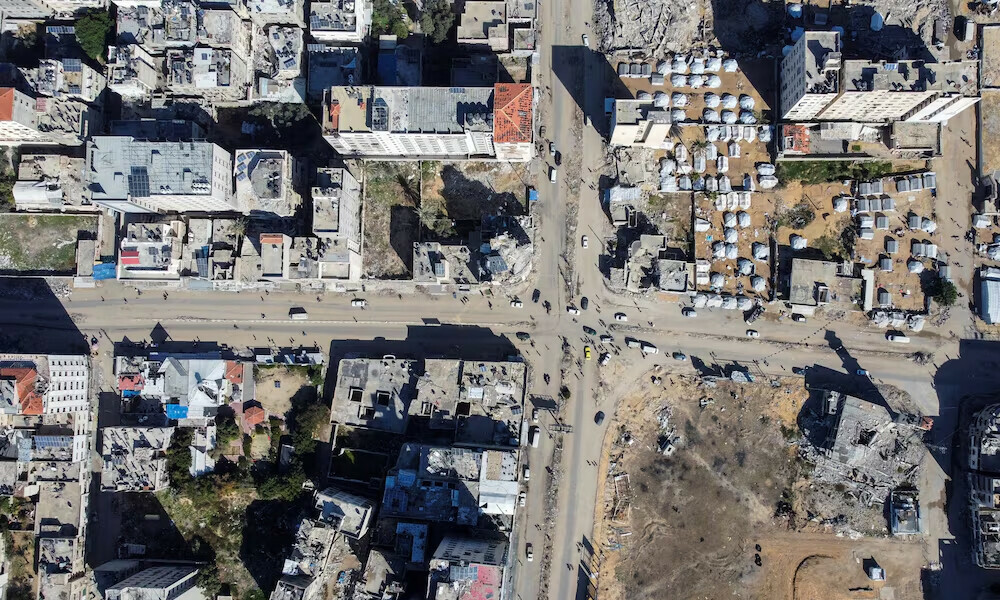In the aftermath of the 15-month conflict between Israel and Hamas, Gaza’s landscape remains scarred by destruction.
Yet, amid the rubble and ruins, Hamas’ grip on the territory is unmistakable. Following the recent ceasefire, Hamas has swiftly reestablished its presence in the region.
Its blue-uniformed police patrol the streets, while armed gunmen guard convoys delivering much-needed aid. This shows Hamas’ commitment to maintaining control and restoring order in the Strip.
Hamas’ swift administrative actions reveal its determination to restore basic services to the enclave. Teams have started to clear rubble, repair roads, and restore critical infrastructure like water pipelines.

Government and Security Infrastructure
Hamas’ presence in Gaza goes far beyond security. The group’s administrators have continued running government ministries and agencies, paying salaries to public employees, and managing international NGO collaborations.
In fact, the group controls all facets of the Gaza government, including health services, education, and welfare programs.
Al-Thawabta revealed that “18,000 employees are actively working to ensure daily services are maintained for Gaza’s citizens.”
Despite Israel’s claims to have dismantled Hamas’ leadership by targeting key officials like Yahya Sinwar and Mohammed Deif, Hamas remains deeply entrenched.
Its administrative and security infrastructure runs parallel to its military wing, making it challenging for external forces to fully dismantle its influence.
Israel, too, remains divided on its approach. While some factions within the government, including far-right ministers, advocate for continued military action to permanently dismantle Hamas, others have called for a more strategic, long-term political solution.
However, Israeli Prime Minister Benjamin Netanyahu has not articulated a clear vision for Gaza’s future beyond insisting that Hamas must be removed entirely.
A Long and Costly Process
The damage inflicted upon Gaza during 15 months of war has left the territory in ruins. According to a UN damage assessment, clearing the more than 50 million tonnes of rubble alone could take over 21 years and cost up to $1.2 billion.
Al-Thawabta explained that Hamas is working closely with UN bodies to ensure the safety of aid routes, but the distribution itself is managed by global humanitarian organizations.
However, the reconstruction effort will not be quick. It is expected to take years and cost billions.
The third and final phase will focus on rebuilding homes, businesses, and infrastructure, ensuring that Gaza can regain a semblance of normalcy.
As Hamas continues to consolidate power in Gaza, Israel finds itself at a crossroads. Diplomatic efforts have centered on finding a lasting peace, with models like international peacekeeping being floated.
Countries like the United States and the United Arab Emirates have proposed temporary international oversight to facilitate governance, security, and reconstruction — but no agreement has been reached.
Views on Hamas’ Continued Control
The local population, however, is split on their feelings about Hamas’ continued presence. For some, like Salah Abu Rezik, a factory worker, the group’s ability to provide aid during the conflict makes it indispensable: “Hamas helped us when we were starving, distributed food, and kept some level of security. Where else would we turn?”
Others, like Ameen, a displaced civil engineer, are frustrated;
“We had a life before — homes, businesses, and hope. Now we have nothing. Hamas is responsible for our destruction. They cannot be allowed to rule alone.”


